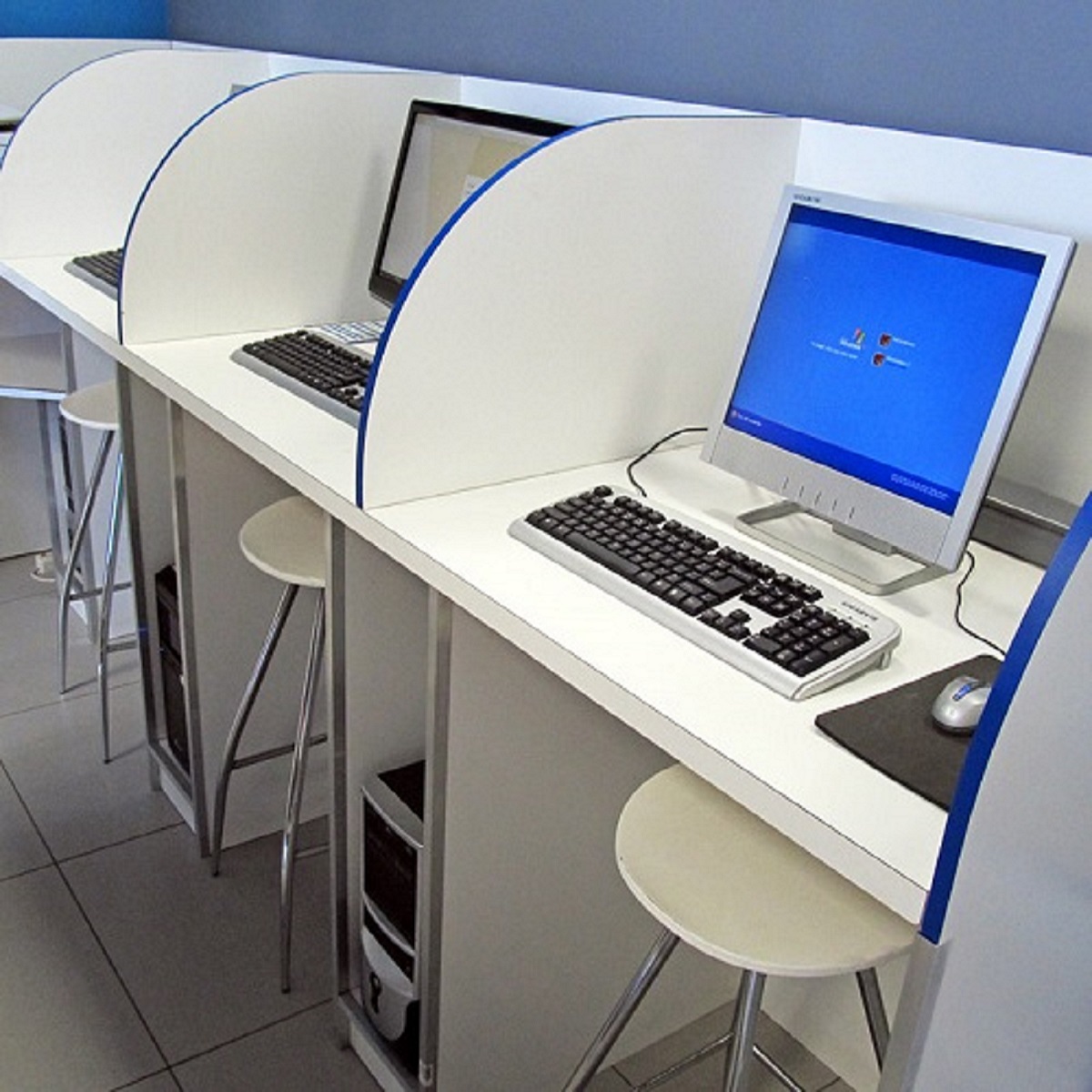Have you ever experienced poor picture or sound quality when watching your favorite movies or TV shows? It can be frustrating, especially when you have invested in high-quality equipment. Fortunately, a solution can provide better performance than traditional cables: HDMI Active Optic Cables.
These innovative cables use fiber optics to transmit data and offer several benefits over regular cables, including higher bandwidth and longer distances without signal loss. Let’s dive deeper into what an HDMI Active Optic Cable is and why it might be the upgrade your home theater system needs!
What is an HDMI Active Optic Cable?
An HDMI Active Optic Cable (AOC) is a high-performance and advanced type of HDMI cable that uses fiber optic technology to transmit high-definition audio and video signals over long distances without signal loss or degradation. This innovative technology has been developed to overcome the limitations of traditional copper-based HDMI cables, which are prone to signal loss and distortion over extended distances.
The HDMI AOC consists of a transmitter and a receiver, connected by a fiber optic cable, which is typically 50-100 meters in length. The transmitter is connected to the source device, such as a computer or media player, and converts the HDMI signal to an optical signal. The optical signal is then transmitted through the fiber optic cable to the receiver, which is connected to the display device, such as a TV or monitor. The receiver converts the optical signal back to an HDMI signal, which can be displayed on the screen.
HDMI AOCs are their ability to transmit high-quality audio and video signals over long distances without the need for signal boosters or extenders. This makes them ideal for use in large venues, such as conference rooms, auditoriums, and sports stadiums, where long cable runs are required. Furthermore, HDMI AOCs are thinner and more flexible than traditional HDMI cables, making them easier to install and conceal in tight spaces.
HDMI AOCs are the ability to support higher resolutions and refresh rates than traditional HDMI cables. HDMI AOCs can support 4K UHD (Ultra High Definition) resolutions at 60Hz, as well as HDR (High Dynamic Range) and 3D video formats, providing an immersive and high-quality viewing experience.
HDMI AOCs are a reliable, high-performance, and cost-effective solution for transmitting high-quality audio and video signals over long distances. With their advanced fiber optic technology, they offer a level of performance and quality that is unmatched by traditional copper-based HDMI cables.
The Different Types of Active Optic Cables
Active Optic Cables (AOCs) are available in a variety of types, each designed to meet specific needs and requirements. Here are some of the different types of AOCs:
- HDMI AOCs: HDMI AOCs use fiber optic technology to transmit high-definition audio and video signals over long distances without signal loss or degradation. They are ideal for use in large venues such as auditoriums and conference rooms.
- DisplayPort AOCs: DisplayPort AOCs use fiber optic technology to transmit high-quality audio and video signals over long distances. They support high resolutions and refresh rates and are commonly used in gaming and multimedia applications.
- Thunderbolt AOCs: Thunderbolt AOCs use fiber optic technology to transmit data, audio, and video signals over long distances. They support high data transfer rates and are commonly used in professional applications such as video editing and graphic design.
- USB AOCs: USB AOCs use fiber optic technology to extend USB connections over long distances. They support high-speed data transfer rates and are ideal for use in industrial, medical, and military applications.
- Infiniband AOCs: Infiniband AOCs use fiber optic technology to extend Infiniband connections over long distances. They are commonly used in high-performance computing and data center applications.
Why are Active Optic Cables Better Than Regular Cables?
Active Optic Cables (AOCs) are better than regular cables for several reasons. Here are some of the advantages of using AOCs:
- Longer Distances: AOCs can transmit signals over longer distances without signal loss or degradation. This is because they use fiber optic technology, which is not susceptible to electromagnetic interference (EMI) or radio frequency interference (RFI) that can degrade the signal over long distances.
- Higher Bandwidth: AOCs can support higher bandwidths than regular cables. This is because they use fiber optic technology, which can transmit data at much higher speeds than copper-based cables.
- Thinner and Lighter: AOCs are thinner and lighter than regular cables. This makes them easier to install and manage in tight spaces, which is especially useful in professional settings such as data centers, where space is often at a premium.
- Immunity to EMI and RFI: AOCs are immune to EMI and RFI, which can cause interference and signal loss in regular cables. This makes them more reliable and better suited for use in environments where there is a lot of electronic equipment or other sources of interference.
- Better Signal Integrity: AOCs offer better signal integrity than regular cables. This is because they use fiber optic technology, which provides a clean and stable signal that is not subject to the noise and distortion that can affect copper-based cables.
The Benefits of Active Optic Cables
Active optic cables have gained popularity in recent years due to their numerous benefits over regular HDMI cables. One of the most significant benefits is distance transmission – these cables can transmit data up to 100 meters without any signal loss. This makes them ideal for applications where long-distance connectivity is essential, such as conference rooms, auditoriums, and large lecture halls.
Another benefit of active optic cables is that they are immune to electromagnetic interference (EMI) and radio-frequency interference (RFI). These interferences can significantly impact the quality of signals transmitted through traditional copper cables. Active optic cables use fiber optics technology that doesn’t get affected by EMI or RFI, ensuring a stable and reliable connection every time.
Furthermore, active optic cables offer higher bandwidth capabilities than traditional HDMI cables. They support high-speed data transfer rates with resolutions up to 8K at 60Hz or even higher depending on the cable’s specifications.
Active optic cable also supports bidirectional communication between connected devices with its built-in chipset technology allowing two-way communication between compatible devices like displays or projectors. This feature makes it easy for users to control multiple displays from one device remotely.
Active optic cables provide a reliable means of transmitting high-quality audiovisual content over longer distances while maintaining signal integrity throughout the entire length of the cable run.
The Pros and Cons of Active Optic Cables
Active optic cables offer several benefits, but they also have some downsides that you should consider before making a purchase.
On the positive side, active optic cables are lightweight and flexible, making them easy to install in tight spaces. They also provide superior signal quality compared to traditional copper cables, which can suffer from signal degradation over long distances.
Another advantage of active optic cables is their immunity to electromagnetic interference (EMI) and radio frequency interference (RFI), which can cause distortion or even complete loss of signal in copper-based systems. This makes them ideal for use in data centers and other environments where EMI/RFI is a concern.
However, there are also some drawbacks to using active optic cables. One major issue is cost; these specialized cables can be significantly more expensive than standard HDMI or Ethernet cabling options. Additionally, because they require external power sources at both ends of the cable run, installation may be more complex than with passive cabling solutions.
It’s worth noting that not all devices support HDMI Active Optic Cables out-of-the-box – so check your equipment manuals carefully before purchasing!
How to Choose the Right Active Optic Cable
Choosing the right HDMI Active Optic Cable can be overwhelming, but it doesn’t have to be. Here are a few factors to consider when selecting the best cable for your needs.
Firstly, determine the length you need as active optic cables come in various lengths ranging from 10 meters up to 100 meters or more. It’s important to know how far apart your devices will be so you can choose an appropriate length.
Secondly, check the bandwidth and resolution that a cable supports. This is especially important if you want to transmit high-resolution video signals like 4K or even 8K. Make sure that the cable you select meets these requirements.
Thirdly, look for compatibility with your devices’ HDMI version. The latest version of HDMI is 2.1 which supports higher resolutions and refresh rates than older versions like HDMI 1.4 or 2.0b.
Pay attention to the construction quality and durability of the cable itself including its connectors such as gold-plated contacts that resist corrosion over time.
By keeping these factors in mind when selecting an active optic cable, you’ll ensure smooth transmission of clear audio and video signals between all connected devices without any signal degradation over long distances.
Conclusion
HDMI Active Optic Cables are the best choice for anyone who is looking for a high-quality cable that provides superior performance and reliability. They offer several benefits over regular cables, including longer transmission distances, better signal quality, and more flexibility in installation.
When choosing an active optic cable, make sure to consider factors such as length requirements, compatibility with your devices, and budget. But with so many options available on the market today, you can easily find one that meets all of your needs.
So if you want to enjoy crystal-clear audio and video signals without any interference or degradation in quality – whether for home theater systems or professional installations – then try using an HDMI Active Optic Cable today!
Author Bio
I am a content writer in hunter India. I have been working in this field for the past two years and have gained a lot of experience in the field of digital marketing. I have written articles for many websites and have also worked on SEO projects. I am interested in digital marketing and want to pursue a career in this field.








Comments